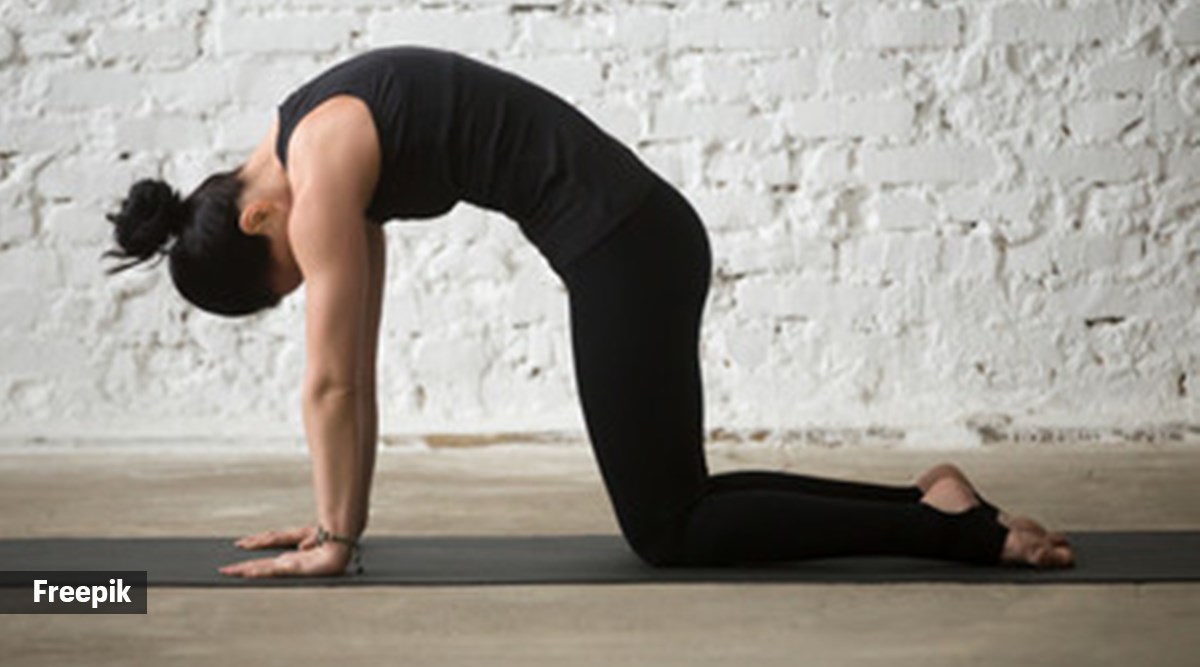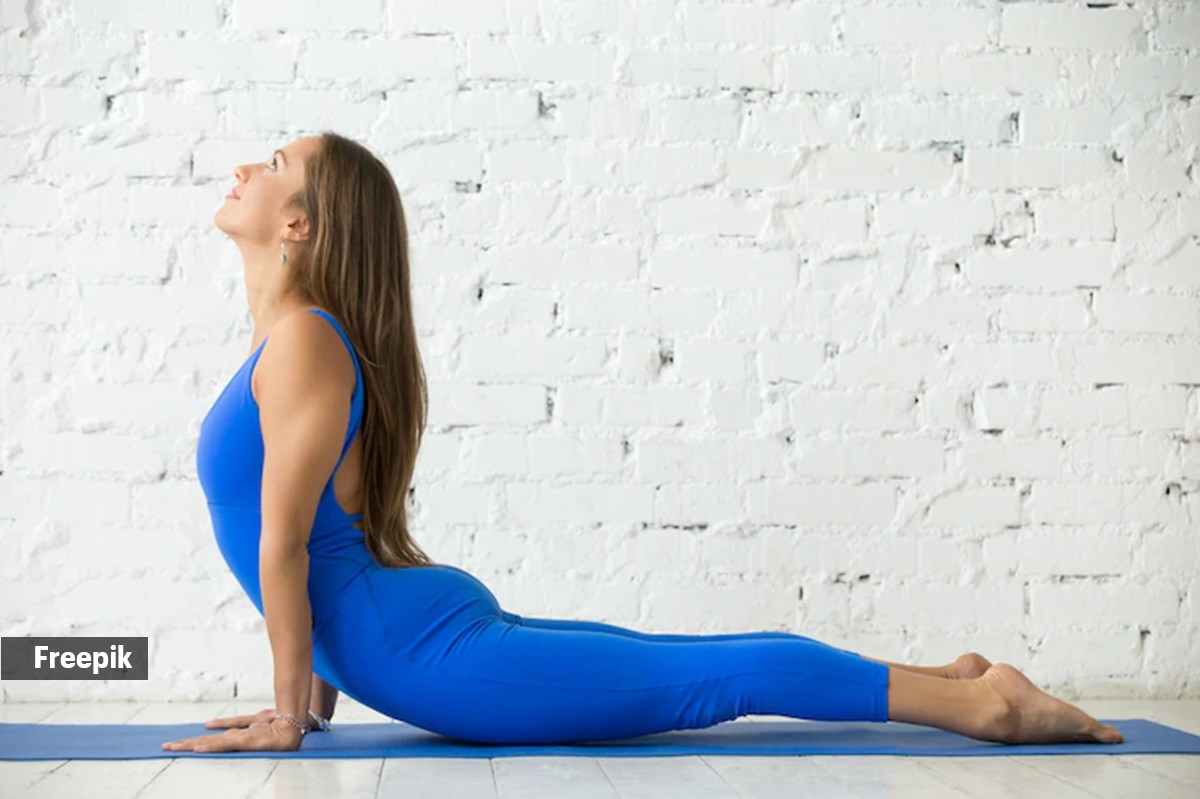📣 For more lifestyle news, click here to join our WhatsApp Channel and also follow us on Instagram
5 yoga asanas you must practice daily for overall well-being
From Bhujangasana to Spine twist on back -- here's how you can do these asanas for best results
 Regular yoga practice is essential to achieve the best results. (Source: Freepik)
Regular yoga practice is essential to achieve the best results. (Source: Freepik) Practicing yoga daily, especially by those leading a sedentary lifestyle, not only keeps the body healthy and active but also helps promote calmness and happiness, making it a great exercise for overall well-being. It’s not us, even experts stress the same.
“Yoga isn’t just a one-hour workout, it’s a lifestyle. Most of us lead a busy life with very less or no time to dedicate to our well-being and health. But, prioritising movement, even if it’s just for 30 minutes, is crucial,” Anshuka Parwani, a celebrity yoga and holistic wellness expert, wrote on Instagram.
View this post on Instagram
As such, below are asanas to help you activate the muscles of the entire body and leave you feeling energised and refreshed:
Cat Cow pose
The Cat Cow pose, also known as Chakravakasana, involves moving the spine from a rounded position to an arched one. Explaining the benefits of this asana, Himalayan Siddhaa Akshar, Founder of Akshar Yoga Institutions said, “It is good for relaxation, stretches the back and neck muscles, and facilitates deep inhalation and exhalation.” However, he pointed out that one must avoid this pose if they are pregnant or have knee injury.
Steps:
*Get down on your knees, place palms under shoulders and knees under hips.
*Inhale, curve your spine to look up.
*Exhale, curve your spine to form an arch of the back and allow your neck to drop down.
*Focus your gaze towards your chest.
 This pose involves moving the spine from a rounded position to an arched one. (Source: Freepik)
This pose involves moving the spine from a rounded position to an arched one. (Source: Freepik)
Downward Dog pose
Also known as Adho Mukha Svanasana, the Downward Dog pose is a forward bending asana. As the name suggests, it resembles the shape of dog stretching its body. Akshar said that people with conditions such as depression and anxiety can benefit from this pose. “Daily practise improves headache, sleeplessness and exhaustion while calming the mind. It is also excellent for anyone looking to lose weight,” he added.
However, he noted that before starting your practise, it is essential to speak with a qualified trainer or physician. “Avoid performing this asana if you have carpal tunnel syndrome or diarrhea. Women in their final trimester of pregnancy should also not perform this pose, along with people with an ongoing injury to the arms, hips, shoulders or back, high blood pressure, a headache, a detached retina or weak eye capillaries,” he continued.
Steps:
*Starting on all fours, make sure your palms are beneath your shoulders and your knees are below your hips.
*Then, lift your hips up, straighten your knees and elbows, and form an inverted “V.”
*Hold for eight to ten breaths while keeping your eyes on your big toes and pointing your fingers forward.
*Strive to push your heels all the way to the floor.
Bhujangasana
Bhujangasana is a back bending pose, which is also a part of the Surya Namaskar sequence. In Sanskrit, the word Bhujangasana comes from a combination of two words- ‘bhujanga’ which translates to ‘cobra’ and ‘asana’ meaning ‘posture’. Even visually ,it resembles the cobra which has its hood raised.
“It is considered one of the best asanas to get a flat stomach. It helps in strengthening and elongating the stomach. This asana burns unwanted stomach fat as it stretches abdominal muscles,” said Akshar, adding that one must avoid this pose in case of back injury, carpal tunnel syndrome, headaches or pregnancy.
Steps:
*Lie down flat on the floor on your stomach. Stretch your legs back with your toes out on the floor. Spread your palms on the floor under your shoulders and bring the elbows close to the sides of your body.
*Press the tops of your feet and thighs into the floor.
*Inhale as you press your palms into the floor and slowly straighten the arms.
*Lift the chest off the floor as much as till your navel. Let your pelvis remain on the floor.
*Gently squeeze your buttocks even as you keep pushing your navel down.
*Broaden your shoulder blades as you engage them to lift up the chest forward.
*Hold the pose anywhere from 15 to 30 seconds inhaling and exhaling.
*Release back to the floor with an exhalation.
 In Sanskrit, the word Bhujangasana comes from a combination of two words- ‘bhujanga’ which translates to ‘cobra’ and ‘asana’ meaning ‘posture’. (Source: Freepik)
In Sanskrit, the word Bhujangasana comes from a combination of two words- ‘bhujanga’ which translates to ‘cobra’ and ‘asana’ meaning ‘posture’. (Source: Freepik)
Malasana
Malasana, also known as Waste Evacuation pose, is a deep squat where the hip is pushed towards the ground, while grounding the feet and lifting the spine upwards. As for the benefits, it helps open your hips and groin, tones your abdominals, aids in digestion, strengthens your metabolism and improves pelvic health, according to Akshar.
But he recommends avoiding this pose if you have a knee or lower back injury. “Be sure to avoid any jerky motion or coming down into your squat forcefully. Don’t push yourself into a deeper squat than your body is ready to achieve. If you feel any pain, back out of the pose,” Akshar said.
Steps:
*Starting from a standing position with your arms by your sides, descend your pelvis over your heels by bending your knees.
*Make sure your feet are firmly planted on the ground.
*Raise your hands in a prayer position in front of your chest or place them on the floor next to your feet.
Spine twist on back
The spinal twist on the back is a rotation of the spine while lying on your back. The rotation or twisting happens mainly at your waist but can also be felt in areas above and below. As per Akshar, this pose can help with neck and back pain, however, it is also associated with the risk for herniated disc, sacroiliac instability and other injuries.
Steps:
*Starting with your knees bent, your feet flat on the floor, and your shoulders also flat on the floor, the knees are brought up, bent and then crossed over the trunk to one side.
*You can take your knees all the way down to the floor, but if that proves too difficult on your back, you can go part way too.
*You can even put blankets and pillows where your knees land for support.
📣 For more lifestyle news, follow us on Instagram | Twitter | Facebook and don’t miss out on the latest updates!
📣 For more lifestyle news, click here to join our WhatsApp Channel and also follow us on Instagram


- 01
- 02
- 03
- 04
- 05
























